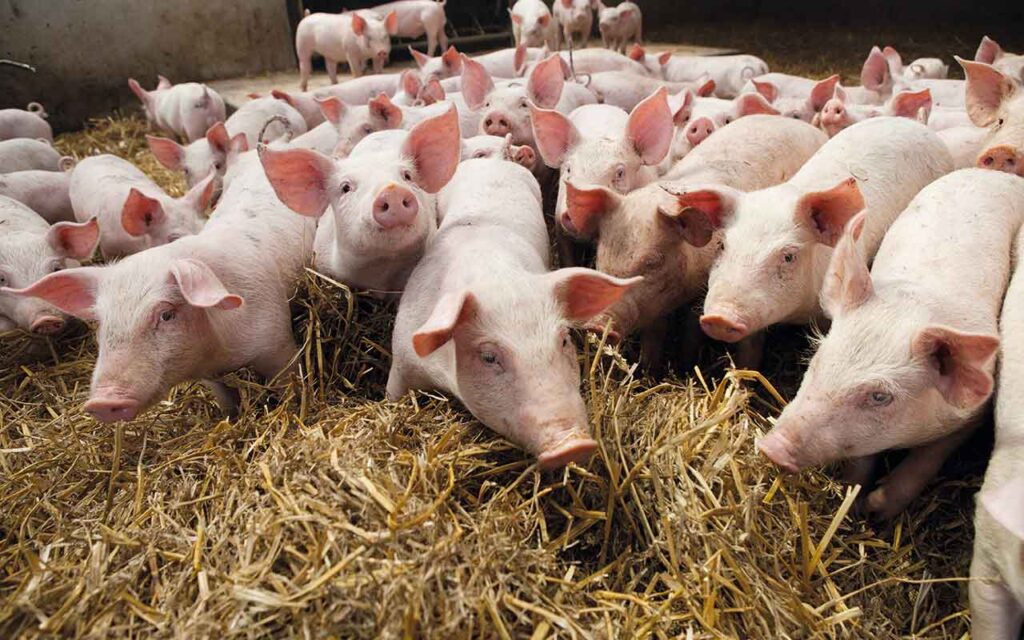With rising global temperatures and more frequent heatwaves, managing heat stress in pigs is becoming an increasingly important focus for productivity and welfare.
Pigs lack functional sweat glands and rely heavily on environmental cooling strategies, making them particularly vulnerable to elevated temperatures. Both sows and finishing pigs face unique challenges, and in some systems, additional risks such as whey bloat from excessive fermentation further complicate heat management.
Heat stress in sows
Sows, particularly during late gestation and lactation, are highly susceptible to heat stress due to their larger body mass and higher metabolic heat production.
The effects are wide-ranging – reduced feed intake, lower milk production, increased stillbirths and poor farrowing outcomes are all common consequences. Lactating sows experiencing heat stress often fail to consume enough feed to meet their energy demands, leading to body condition loss and lower weaning weights in piglets.
Respiration rate is a reliable early indicator of heat stress in sows. A rate above 60 breaths per minute warrants intervention (normal is 20-40 breaths per minute). In farrowing houses, the combination of high temperatures and humidity can be particularly dangerous.
Solutions include increased airflow through a tunnel or cross-ventilation, evaporative cooling pads and drip-cooling systems targeted at the neck and shoulders. However, water quality must be monitored, especially in systems with open nozzles, to prevent biofilm build-up and secondary infections.
Shade and access to clean, cool drinking water are fundamental. Each sow should have access to at least 10 litres of fresh water per day, but in hot spells, this may need to increase to 20 litres or more.
Water delivery systems should provide 2-4 litres per minute per nipple to ensure effective intake. It’s also worth noting that sows require roughly 3 litres of clean water for every litre of milk produced.
Finishing pigs
For finishing pigs, the primary concern is reduced growth rate and feed efficiency. Pigs begin to experience heat stress from as low as 21°C, with a significant effect on performance observed above 25°C.
Feed intake drops, and energy is diverted from growth to maintenance and cooling. The result: poorer feed conversion ratios (FCR) and inconsistent finishing times.
One strategy is to shift feeding to cooler times of the day – early morning and late evening – and to reformulate rations to be more energy-dense while reducing heat increment.
For example, increasing dietary fat and reducing fibre can lower internal heat production during digestion. However, this must be done with caution, particularly when including high-risk ingredients like whey or other rapidly fermentable carbohydrates.
Whey bloat
Whey, often included in pig diets for its high lactose content and palatability, can pose a serious risk during hot weather. Under heat stress, gut motility slows and microbial populations shift.
Excessive fermentation of whey in the hindgut can lead to rapid gas production, resulting in abdominal distension, respiratory distress, and in severe cases, sudden death – a syndrome commonly referred to as ‘whey bloat’.
Finishing pigs are most at risk, especially in systems where whey is delivered ad libitum via wet feeding.
To mitigate this, whey inclusion rates should be carefully managed during summer months, with total lactose intake kept below 5% of dry matter.
Introducing acidifiers or enzyme preparations may help reduce fermentation in the hindgut. Additionally, providing fibre from safe sources such as sugar beet pulp can help modulate fermentation and maintain gut health.
Regular observation is key. Pigs showing signs of bloat – swollen abdomen, discomfort, reluctance to lie down – should be assessed immediately, and advice sought from your vet for next steps.
Heat stress and its related complications are a growing concern, but with proactive management and close attention to nutrition, welfare and the pigs’ environment, producers can safeguard pig performance and minimise losses.
As always, consult your nutritionist before making major ration changes, particularly in extreme weather conditions.




